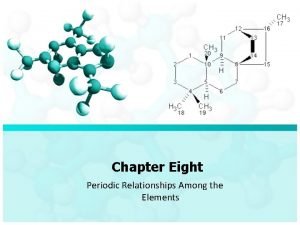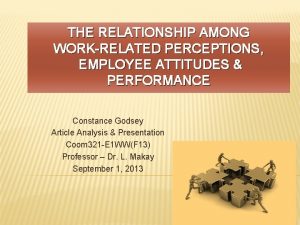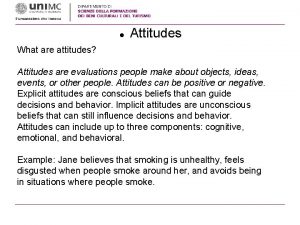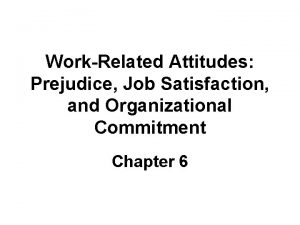The Relationships Among WorkRelated Perceptions Employee Attitudes Employee








- Slides: 8

The Relationships Among Work-Related Perceptions, Employee Attitudes, & Employee Performance Jenny Gearheart COMM 321 -E 1 WW June 11, 2013

Introduction l This article explorers the idea of organizational communication and how it relates to employee performance. l Recent increases in competitive demands placed on industries around the world have forced companies to adopt practices aimed at creating higher involvement & higher performing organizations. l Explore from the employees perspective, the nature of communication as an element of Human Resource Management. l Examine the building blocks of employee involvement and elements of employees affective attitudes, then review a study completed to determine the affect communication has on employee performance.

The “Building Blocks” of Employee Involvement l Communication: important in organizational functioning and has been proposed as a means of bringing about organizational effectiveness. l Participation in Decision Making: Attempt to diminish the hierarchical structure of the organization to involve managers and subordinates in information processing, decision making, or problem solving. l Teamwork: Teams have been found to create a broad set of positive changes in organizations.

Elements of Employee Affective Attitudes l Organizational Commitment: An individual’s psychological bond to an organization. l Job Satisfaction: consistent support for a positive relationship between communication and job satisfaction. l Stress & Well-Being: Stress has wide range of effects on worker behavior, including health implications. l Other Variables of Interest: Demographics – Age & Tenure

Research Study l Background information on company surveyed: ¡Medium to large Australian IT firm used for survey ¡Absenteeism rate = less than 1% ¡Turnover = 1% each year ¡Team-oriented procedures in place ¡Employee opinions regularly sought & accepted ¡ 82% response rate (out of 329 employees)

Survey Method l Survey was conducted using scales and questionnaires l Scales were used to assess employee involvement ¡ Communication – 8 item scale ¡ Participation in decision making – 5 item scale ¡ Teamwork – 7 item questionnaire l Scales were used to assess employee affective relations ¡ Job satisfaction – 5 item questionnaire ¡ Organizational commitment – 15 item questionnaire ¡ Stress – 7 item scale l Employee performance measured using 5 -item self-rating scale

Results of Survey l Teamwork, communication, job satisfaction, commitment, and stress significantly predicted individual performance while tenure did not show a trend. l Performance is improved when perceptions of teamwork increase, stress increases, satisfaction increases, and commitment increases. l It was not found that employee perceptions of greater participation in decision making was a direct and significant predictor of employees selfrated performance after employee attitudes had been accounted for. l Achieving higher quality communication appears to decrease employee’s performance while also having a significant positive relationship with job satisfaction, commitment, teamwork, and participation in decision making.

Analysis Based on Findings l Correlation between perceptions of communication & performance misrepresents the role of communication in increasing performance. l Communication is not the crux of enhancing performance, but it is the foundation of other mechanisms that are key direct factors that enhance performance. l HR managers will want to focus their attention on the quality of the communication systems they put in place and maintain, rather than focusing on more communication for the sake of communication.
 Employee attitudes and employee performance
Employee attitudes and employee performance Managing employee attitudes and behaviors
Managing employee attitudes and behaviors Negative employee attitudes
Negative employee attitudes Positive employee attitudes and behaviors
Positive employee attitudes and behaviors A flowchart that depicts the relationships among the input
A flowchart that depicts the relationships among the input![X3+;[ar]4s03d5 X3+;[ar]4s03d5](data:image/svg+xml,%3Csvg%20xmlns=%22http://www.w3.org/2000/svg%22%20viewBox=%220%200%20200%20200%22%3E%3C/svg%3E) X3+;[ar]4s03d5
X3+;[ar]4s03d5 Periodic relationships among the elements
Periodic relationships among the elements Demand relationships among goods
Demand relationships among goods Periodic relationships among the elements
Periodic relationships among the elements
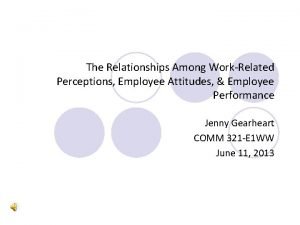
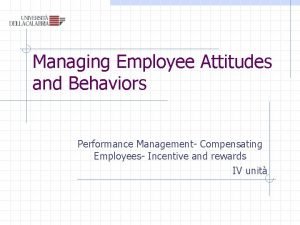
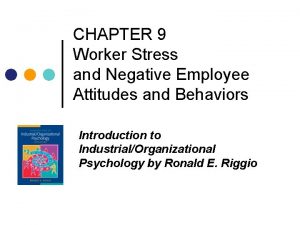
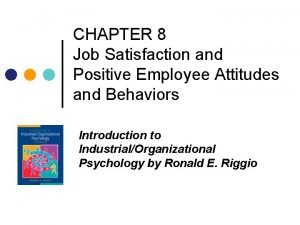
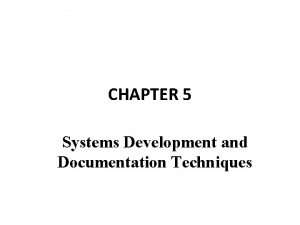
![X3+;[ar]4s03d5 X3+;[ar]4s03d5](https://slidetodoc.com/wp-content/uploads/2021/03/4158911_0d22f48b574d2adf287d5d4c24bb4641-300x225.jpg)
